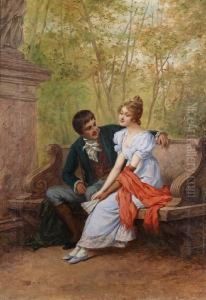Helene Richter Paintings
Helene Richter was an Austrian-born British artist, known for her contributions to modernist painting and sculpture in the early 20th century. Born on November 4, 1889, in Vienna, Austria, Richter was introduced to the world of art at a young age, thanks to the vibrant cultural atmosphere of Vienna at the turn of the century. She grew up in an era that was witnessing the emergence of modernist movements across Europe, which significantly influenced her artistic direction.
Richter moved to Britain in the early 1910s, where she became an integral part of the British modernist movement. She studied art in London, where she was exposed to a variety of styles and techniques that further shaped her approach to art-making. Despite the male-dominated art scene of the time, Richter managed to carve out a space for herself and her work, gaining recognition for her unique style and perspective.
Throughout her career, Richter experimented with different mediums, including painting, sculpture, and printmaking. Her work often explored themes of identity, femininity, and the human condition, reflecting her own experiences as a woman artist in a rapidly changing world. Richter's style evolved over the years, from more figurative early works to abstract compositions in her later years. Her ability to blend different elements of modernism with her own personal vision made her work stand out among her contemporaries.
Richter's contributions to the art world were recognized with several exhibitions and awards throughout her lifetime. Despite facing challenges as a female artist, she remained committed to her craft, continuously evolving and pushing the boundaries of modernist art. Helene Richter died on August 22, 1976, in London, leaving behind a legacy that continues to inspire artists and art enthusiasts. Her work is featured in various collections and museums, testament to her enduring impact on the world of art.

